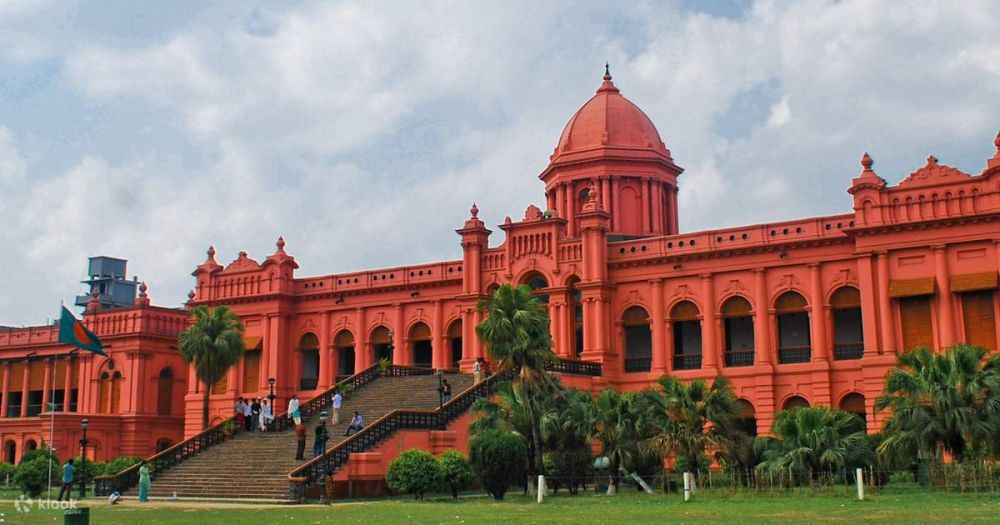

Located in the heart of Dhaka, Bangladesh, Ahsan Manzil, often referred to as the Pink Palace, is a significant historical landmark and a testament to the city's cultural heritage. The history of tourism at Ahsan Manzil is as rich and varied as the history of the palace itself.
The palatial home was built in the era of the Nawabs of Dhaka in the 19th century, originally constructed under the direction of Nawab Abdul Ghani, the city's wealthiest landowner at the time. The construction began in 1859 and was completed in 1872. Ahsan Manzil became a symbol of prestige and was named after Nawab Khwaja Ahsanullah, a prominent figure and philanthropist in the Nawab family.
In 1888, the palace was partially damaged by a tornado, but it was later restored to its former glory. The Nawabs used the palace as their official residential address and the center for governing their estate. However, after the decline of the Nawab family, the palace was eventually abandoned and fell into disrepair.
It wasn't until the 1980s that the government of Bangladesh took steps to restore the palace. Thanks to the efforts of the Department of Archaeology, Ahsan Manzil was converted into a museum in 1992, opening its doors to the public as a window into the lives of the Nawabs and a piece of the nation's history.
The government's initiative to preserve Ahsan Manzil was the beginning of its journey as a modern tourist attraction. Visitors from all over the world come to explore its architectural beauty, the history embedded within its walls, and the panoramic views of the Buriganga River.
In recent years, there has been a surge in heritage tourism, with travelers seeking out destinations that offer a deeper understanding of local histories and cultures. Ahsan Manzil, being an epitome of cultural heritage in Dhaka, has benefited from this trend.
The museum now houses an extensive collection of artifacts, photographs, paintings, and furniture from the time of the Nawabs. With the rise of social media, it has also become a popular spot for photography, drawing younger generations interested in the aesthetic and historical significance of the location.
Additionally, the growth of urban tourism has led to an increased interest in historic city landmarks. Ahsan Manzil, with its proximity to other historic sites in Old Dhaka, has become part of a popular cultural circuit for both domestic and international tourists.
Tourists visiting Ahsan Manzil can benefit from guided tours that provide valuable insights into the palace's history, architecture, and its significance in the cultural fabric of Bangladesh. The complex also hosts cultural events and exhibitions that align with the country's heritage preservation efforts and contribute to the educational experience of visitors.
As the tourism landscape continues to evolve, Ahsan Manzil remains a jewel in the crown of Dhaka's tourist attractions, inviting travelers to explore its rich history and continue to be a part of its ongoing narrative.